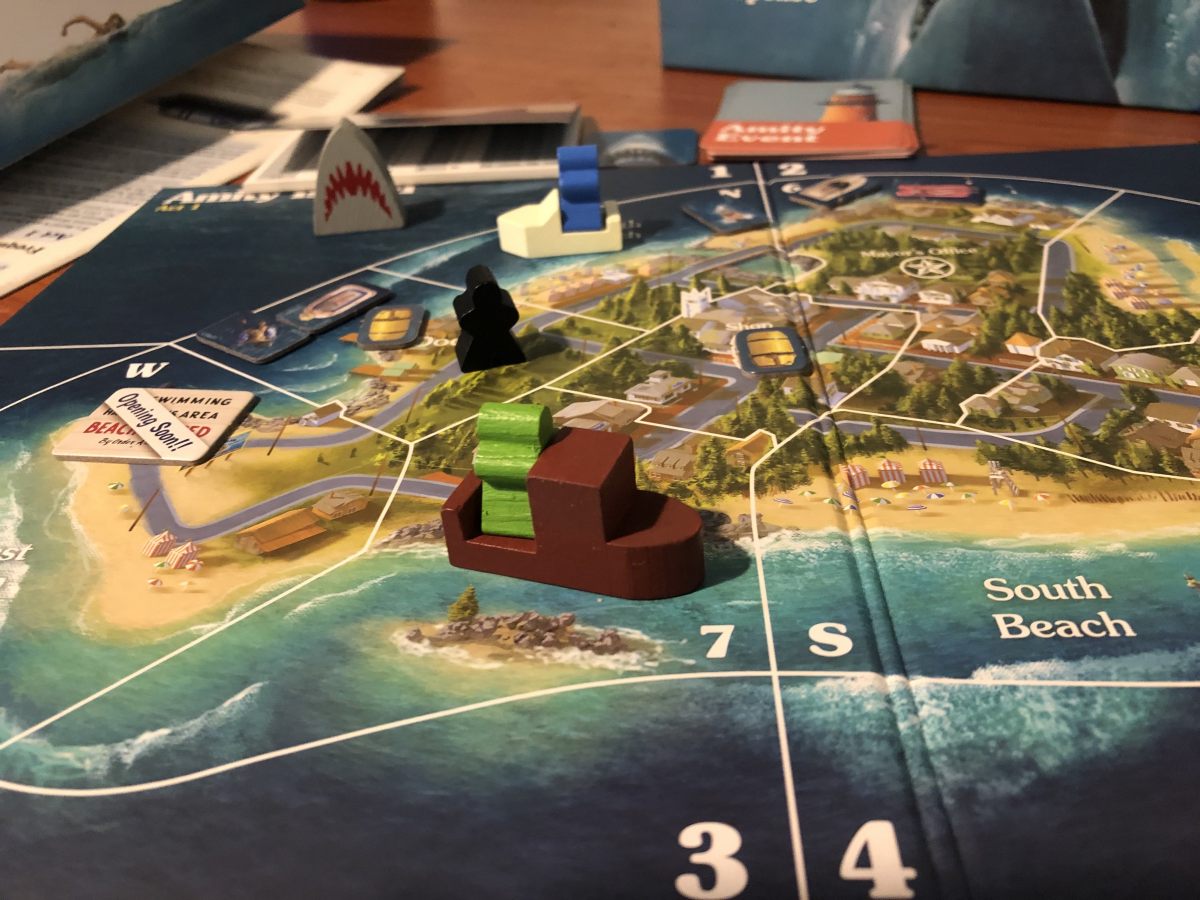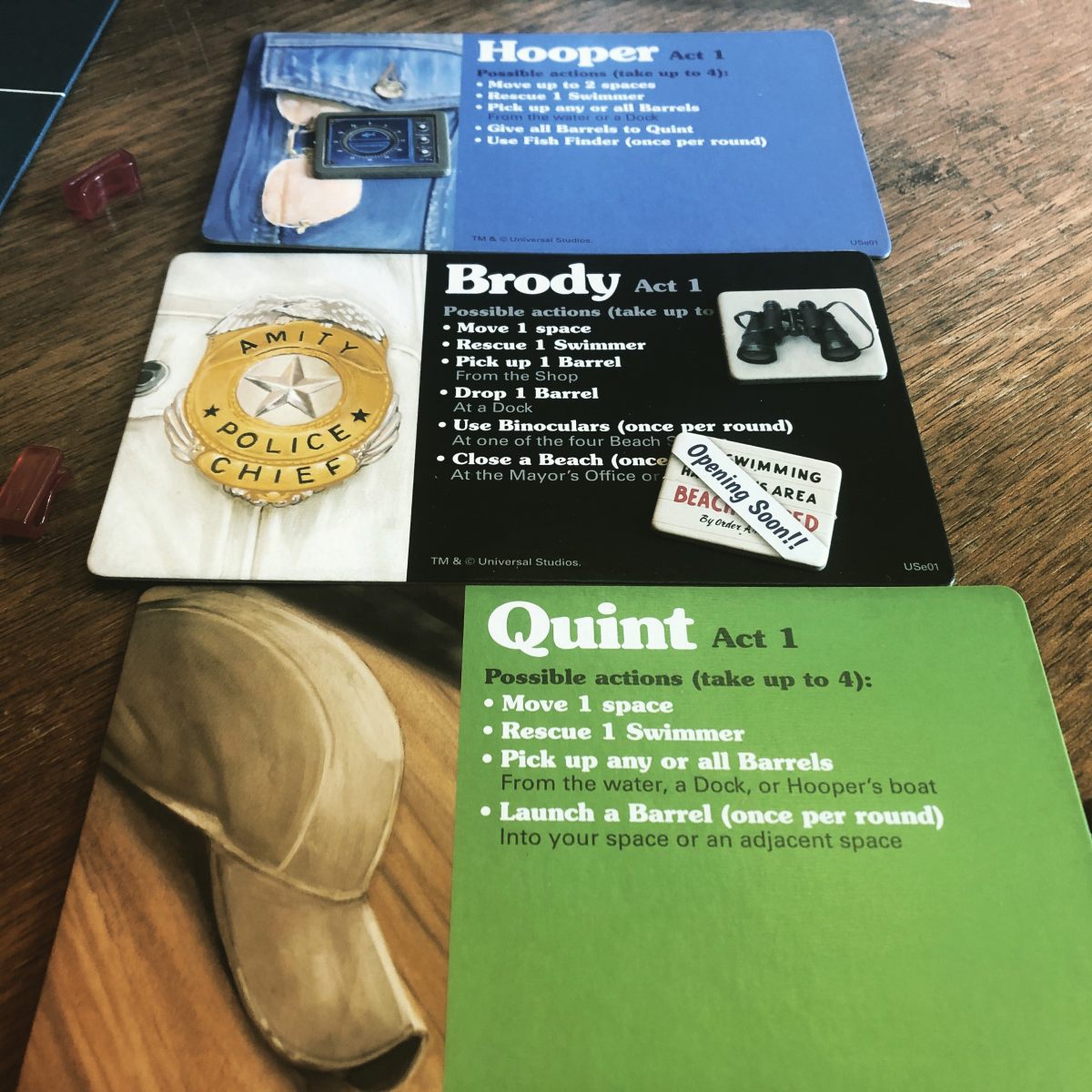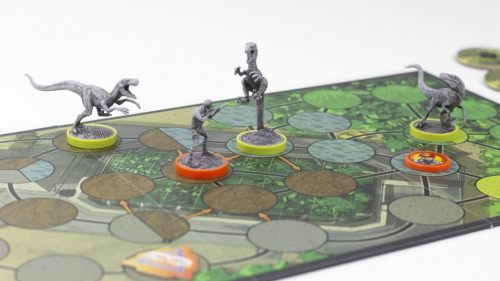Board Game Review: JAWS
Jaws. In board game form. Regardless of where you shop for your games, it pops off the shelf thanks to the beautiful and iconic original poster artwork. For novelty alone, you want to take it home. And for novelty alone, you probably should. The price of admission is worth the box art and the couple of games you’ll likely play before putting it in your closet forever.
But you probably will put it in your closet forever because Jaws just isn’t a very fun game. The concept is interesting, and a whole lot of time clearly went into the art direction. Nevertheless, these surface bells and whistles only help enrich already good game engines. They alone don’t really have the power to make a boring game good, though they can sure make you wish you liked a game or even give a bad game more than one chance to redeem itself. I definitely wish I liked Jaws, and I’ve definitely given it enough chances to change my mind.
As seems to be somewhat in fashion with movie-tie in games (I’m thinking specifically of the Die Hard and Big Trouble in Little China), Jaws utilizes a two-sided board to represent a major game shift at some point during gameplay. In this particular case, that function makes Jaws essentially two separate games.
The first is the better of the two. Jaws is asymmetrical, so while one lucky player gets to be the shark, your three remaining friends will have to choose between Brody, Quint and Hooper. All three characters must be present in each game regardless of how many players there are. What that really means is four folks are not just ideal but almost required. With two players, one person hogs all the playing time as all three humans. With three players, each gets a human but then must awkwardly share the third. Only with four can each person get one dedicated person (or fish) to play. If you have five, that fifth person can just watch Jaws the film and probably be happier.
As the shark, your job is to stalk the waters of Amity, eating as many swimmers as you can before the humans attach two floating barrels to your hide. They can’t see where you are, so even if you didn’t have four special powers to use, I wouldn’t worry too much.
As the humans, you have too many damn jobs. Use deduction and a couple different special powers to find the shark (after the first round, this is highly unlikely to happen). Supply the Orca with barrels. Rescue swimmers you think might be on the menu next. And of course, try to blindly shoot barrels at the shark.
Simply put, there is too much luck involved with finding this stupid shark. Even with full use of the game’s tools and your own deductive reasoning - and even if you have studied a full psychological profile of whoever is playing the shark - it still comes down to a guess. A guess between three possible spaces and the entire board is still a guess, and I don’t like board games built around guessing like this.
If the shark eats ten swimmers before you can float it - or when you manage to shoot him with two barrels - you flip the board to the Orca side. How you did on Amity dictates how things begin here. Everyone gets special cards based on the number of swimmers you ate/failed to save.

The Amity part of the game isn’t something I’d voluntarily play for fun, but it isn’t the worst thing in the world. You move forward through it with hope that your next action will net you something worthwhile, and working together with your friends to achieve these goals can be enjoyable.
This Orca part, however, is just plain tedious. The game’s second half is a series of rounds in which the shark surfaces in one of three pre-determined sections of the Orca giving the humans an opportunity to hurt it and the shark an opportunity to eat the boat. Eventually, enough boat is gone that the shark begins eating the humans. When the shark dies, the humans win. When the humans are all gone, the shark wins.
Again, you can’t see the shark, and again, luck plays a big role here. Three cards representing three sections of the boat are drawn each round. The shark player secretly picks where it will resurface. The humans make plans based on where they think the shark will resurface. Then the shark reveals itself and all the lovely violence plays out. There just isn’t enough strategy involved to make this work, you’re guessing and hoping things go well over and over again until it finally ends and you can play a different game.
That’s harsh, but every time I’ve played this game it’s the same. Things are fun at first, but by the end, everyone is just pushing through to get it over with. It all looks cool, but some element, some small bit of purposeful action and strategy, is missing from the mechanic, which renders gameplay inert and boring. It’s fun that they made a Jaws game and I love how great this one looks. But I can’t imagine a scenario where I’d be willing to give this one another chance.




